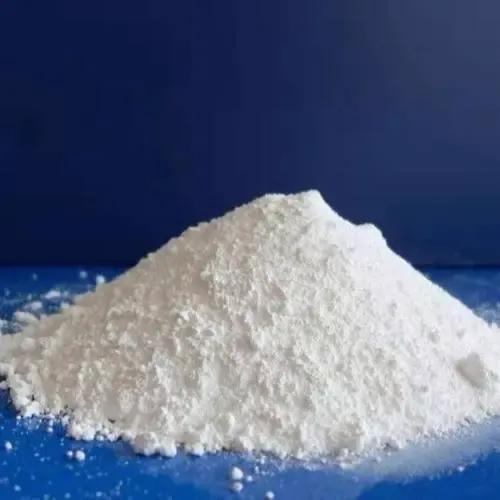
Th11 . 27, 2024 05:43 Back to list
Rutile Titanium IV Oxide Suppliers and Manufacturers for Various Applications
Understanding Titanium IV Oxide Rutile A Key Material in Various Industries
Titanium IV oxide, commonly referred to as titanium dioxide (TiO2), is one of the most widely used and versatile materials in numerous industries, including paints, coatings, plastics, and even food products. The rutile form of titanium dioxide stands out due to its exceptional properties, particularly its high refractive index, excellent opacity, and outstanding durability. This article discusses the significance of rutile titanium dioxide, its manufacturing process, and its applications across various sectors.
What is Rutile Titanium Dioxide?
Rutile is one of the three primary crystalline forms of titanium dioxide, with the other two being anatase and brookite. Rutile is characterized by its tetragonal crystal structure and is the most thermodynamically stable form of TiO2 at room temperature. This stability contributes to its longevity and effectiveness in various applications. Rutile titanium dioxide is extensively recognized for its high pigmentation strength and ability to scatter light, making it the preferred choice for many manufacturers producing white pigments.
Manufacturing Process
The manufacturing of rutile titanium dioxide involves several critical steps. Initially, titanium ore, typically ilmenite or rutile mineral sands, is extracted from the earth. The ore undergoes a refining process that can include the sulfuric acid process or the chloride process.
1. Sulfuric Acid Process In this method, ilmenite is digested with sulfuric acid to produce titanium sulfate. This compound is then hydrolyzed to produce titanium dioxide precipitate, which is further calcined to achieve the desired rutile form. This process requires significant energy but creates a high-quality pigment that is widely used.
2. Chloride Process This method involves refining titanium ore using chlorine gas at high temperatures to produce titanium tetrachloride (TiCl4). The TiCl4 is then oxidized to produce rutile titanium dioxide. This process is generally more efficient and produces a purer form of TiO2, but it requires a higher initial investment in infrastructure.
The final product, rutile titanium dioxide, is then processed and optimized for specific applications, resulting in a range of products, from grade A pigments for coatings to high-performance applications in specialized industries
.titanium iv oxide rutile manufacturer

Applications of Rutile Titanium Dioxide
Rutile titanium dioxide serves a myriad of applications owing to its unique properties
- Paints and Coatings The primary application of rutile TiO2 is as a white pigment in paints and coatings due to its excellent hiding power and durability. It contributes to the brightness and opacity of coatings, ensuring a smooth and aesthetically pleasing finish.
- Plastics In the plastics industry, rutile titanium dioxide is used to enhance the opacity and brightness of plastic products. It improves weather resistance and UV stability, making products more durable against environmental exposure.
- Cosmetics Rutile TiO2 is also utilized in cosmetic formulations. Its ability to scatter UV light makes it an effective ingredient in sunscreens and other skincare products, providing an added layer of protection against harmful UV radiation.
- Food Industry Interestingly, rutile titanium dioxide is approved for use as a food additive, providing color and opacity to various products. It is essential in confections and dairy products to achieve an appealing whiteness.
- Electronics In advanced applications, rutile titanium dioxide is explored for its potential in photocatalysis, solar cells, and as a semiconductor material, highlighting its versatility and significance in technology.
Conclusion
The importance of rutile titanium dioxide cannot be overstated, as it plays a crucial role in enhancing the quality and performance of a vast array of products across multiple industries. As manufacturers continue to explore innovative applications for this material, the demand for high-quality rutile TiO2 is expected to remain robust. Understanding the manufacturing processes, properties, and applications of rutile titanium dioxide is essential for businesses looking to leverage this remarkable material in their operations. As industries evolve, rutile TiO2 will undoubtedly remain at the forefront, driving advancements and offering solutions that meet both consumer needs and sustainability goals.
-
High Quality TiO2 for Superior Performance - Reliable Supply & Purity
NewsJul.27,2025
-
13463-67-7 Titanium Dioxide Using for Coating Supplier – High-Quality Rutile TiO2 for Paints
NewsJul.26,2025
-
High-Quality Titania TiO2 from Leading China Suppliers & Factories
NewsJul.25,2025
-
High Quality Titania TiO2 from Leading China Manufacturer and Supplier
NewsJul.24,2025
-
High-Quality Titanium Dioxide 298 for Versatile Industrial Applications
NewsJul.23,2025
-
High-Quality Titanium Dioxide for Pigments & Industrial Applications
NewsJul.22,2025
